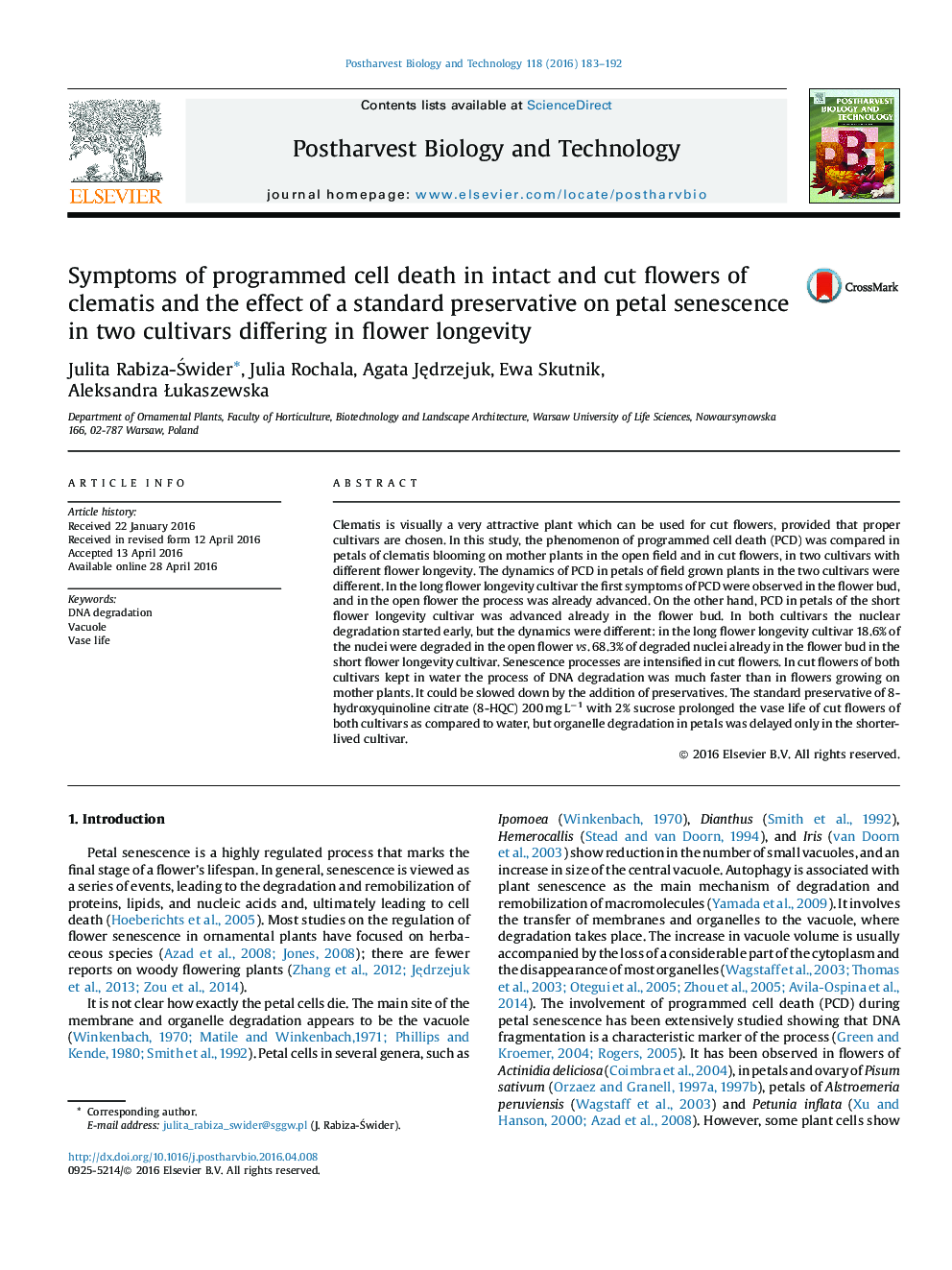| Article ID | Journal | Published Year | Pages | File Type |
|---|---|---|---|---|
| 4517805 | Postharvest Biology and Technology | 2016 | 10 Pages |
•The PCD in petals of intact clematis flowers varied in cultivars with different longevity.•First PCD symptoms were visible already in the flower bud of clematis.•The cell organelle degradation was hastened in detached flowers as compared to intact ones.•The 8-HQC and 2% sucrose prolonged the vase life of cut flowers relative to water.•The 8-HQC and 2% sucrose delayed organelle degradation in the short-lived cultivar.
Clematis is visually a very attractive plant which can be used for cut flowers, provided that proper cultivars are chosen. In this study, the phenomenon of programmed cell death (PCD) was compared in petals of clematis blooming on mother plants in the open field and in cut flowers, in two cultivars with different flower longevity. The dynamics of PCD in petals of field grown plants in the two cultivars were different. In the long flower longevity cultivar the first symptoms of PCD were observed in the flower bud, and in the open flower the process was already advanced. On the other hand, PCD in petals of the short flower longevity cultivar was advanced already in the flower bud. In both cultivars the nuclear degradation started early, but the dynamics were different: in the long flower longevity cultivar 18.6% of the nuclei were degraded in the open flower vs. 68.3% of degraded nuclei already in the flower bud in the short flower longevity cultivar. Senescence processes are intensified in cut flowers. In cut flowers of both cultivars kept in water the process of DNA degradation was much faster than in flowers growing on mother plants. It could be slowed down by the addition of preservatives. The standard preservative of 8-hydroxyquinoline citrate (8-HQC) 200 mg L−1 with 2% sucrose prolonged the vase life of cut flowers of both cultivars as compared to water, but organelle degradation in petals was delayed only in the shorter-lived cultivar.
